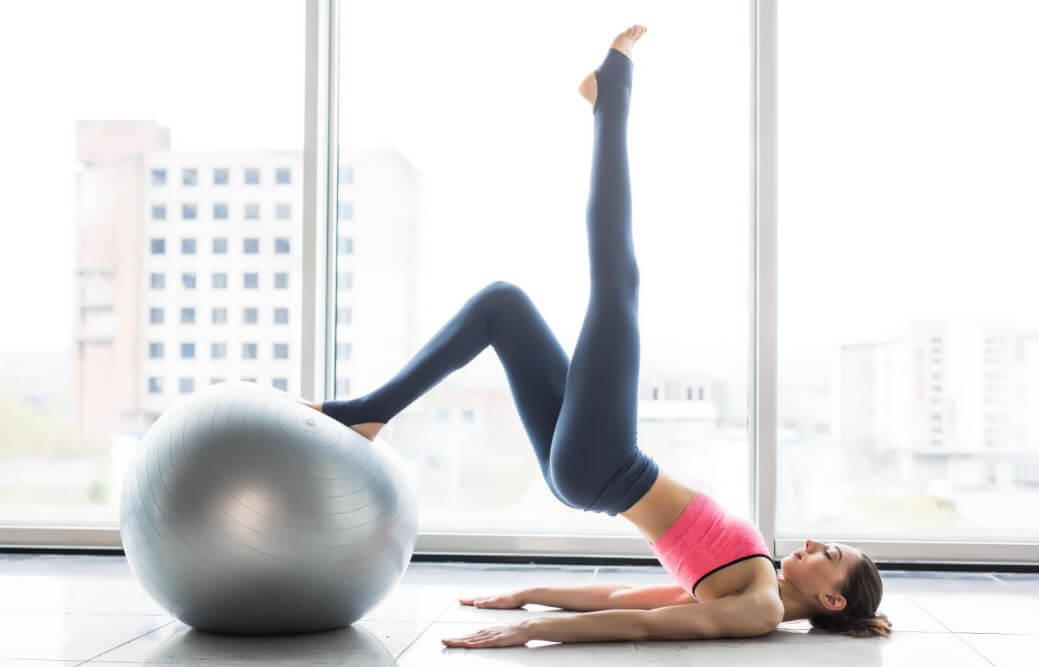Exercising Helps Combat Hypertension

You shouldn’t take hypertension lightly. If you’re able to combat it, exercising is a great option. We’ll explain why in our post today!
Everyone has blood pressure; it’s the force by which blood flows through vessel walls. It becomes a problem, however, when the pressure exceeds normal levels. Fortunately, we can normalize it by following a healthy lifestyle.
Blood pressure and hypertension
The body is designed to maintain a certain blood pressure that ensures a correct blood flow. The blood oxygenates and nourishes our organs, keeping them running efficiently.
You should check your blood pressure every once in a while to make sure everything is as it should be. Look out for two things:
- Systolic blood pressure: measures the pressure in your blood vessels as your heart beats. Systolic blood pressure levels are normally lower than 120.
- Diastolic blood pressure: measures the pressure in your blood vessels as your heart rests in between beats. The number usually rests at 80 or lower.
Hypertension
As its name suggests, hypertension or high blood pressure consists of a blood pressure that exceeds normal levels.
If your blood pressure rises, you should act to lower it in order to prevent serious problems. Hypertension should be treated as soon as possible as it can cause cardiac diseases or strokes.

High blood pressure problems are divided into three stages:
- Prehypertension: in prehypertension cases, the systolic blood pressure levels are between 120-139 while the diastolic blood pressure levels are between 80-89. Patients with prehypertension should start taking action to lower their levels back to normal.
- Mild hypertension: systolic blood pressure levels rise up to 140-159 while diastolic blood pressure levels rise to 90-99.
- Moderate hypertension: patients have a systolic blood pressure level of 160 or higher and a diastolic blood pressure of 100 or higher.
Mild and moderate hypertension are considered actual high blood pressure cases that require medical attention. Seeing a doctor about a diet and medication is extremely important for controlling high blood pressure levels.
Exercise and blood pressure
Following a healthy low-sodium diet, taking prescribed medication and exercising are all recommendable life changes for lowering blood pressure.
Physical activity is a powerful tool against hypertension. Even if you don’t have any related problems, exercising can help you maintain normal levels.
The link between exercise and lowering blood pressure is simple. Exercising raises your heart rate, which makes your heart work harder.
Regular exercise also strengthens your heart, which helps it pump blood. It also reduces the stress on your blood vessels and lowers blood pressure.
Besides lowering high levels of blood pressure, exercising also lowers cholesterol levels, reduces the risk of suffering diabetes or a heart attack while helping you maintain the right weight.
Are all exercises and sports effective against hypertension?
Now, let’s talk about the best workouts for treating hypertension, as well as those that aren’t so recommendable. As the objective is fixed on lowering high blood pressure, you should avoid doing certain workouts too often:
- Weight lifting.
- Intense cardiovascular exercises.
These workouts can be too demanding on a person with blood pressure problems. In light of this, you should avoid them or practice them moderately under professional supervision.
The best exercises and workouts
You shouldn’t partake in activities that are too intense if you have high blood pressure. On a further note, re-prioritize warm-ups for preparing your body before any physical activity.

The following workouts that we recommend for lowering blood pressure are:
- Pilates.
- LISS workouts.
- Walking.
- Biking.
- Yoga.
Whether you have to lower your levels or maintain them, exercise is a wonderful option. As long as you exercise correctly and pair it with a good diet and staying hydrated, you’ll see positive results in no time.
You shouldn’t take hypertension lightly. If you’re able to combat it, exercising is a great option. We’ll explain why in our post today!
Everyone has blood pressure; it’s the force by which blood flows through vessel walls. It becomes a problem, however, when the pressure exceeds normal levels. Fortunately, we can normalize it by following a healthy lifestyle.
Blood pressure and hypertension
The body is designed to maintain a certain blood pressure that ensures a correct blood flow. The blood oxygenates and nourishes our organs, keeping them running efficiently.
You should check your blood pressure every once in a while to make sure everything is as it should be. Look out for two things:
- Systolic blood pressure: measures the pressure in your blood vessels as your heart beats. Systolic blood pressure levels are normally lower than 120.
- Diastolic blood pressure: measures the pressure in your blood vessels as your heart rests in between beats. The number usually rests at 80 or lower.
Hypertension
As its name suggests, hypertension or high blood pressure consists of a blood pressure that exceeds normal levels.
If your blood pressure rises, you should act to lower it in order to prevent serious problems. Hypertension should be treated as soon as possible as it can cause cardiac diseases or strokes.

High blood pressure problems are divided into three stages:
- Prehypertension: in prehypertension cases, the systolic blood pressure levels are between 120-139 while the diastolic blood pressure levels are between 80-89. Patients with prehypertension should start taking action to lower their levels back to normal.
- Mild hypertension: systolic blood pressure levels rise up to 140-159 while diastolic blood pressure levels rise to 90-99.
- Moderate hypertension: patients have a systolic blood pressure level of 160 or higher and a diastolic blood pressure of 100 or higher.
Mild and moderate hypertension are considered actual high blood pressure cases that require medical attention. Seeing a doctor about a diet and medication is extremely important for controlling high blood pressure levels.
Exercise and blood pressure
Following a healthy low-sodium diet, taking prescribed medication and exercising are all recommendable life changes for lowering blood pressure.
Physical activity is a powerful tool against hypertension. Even if you don’t have any related problems, exercising can help you maintain normal levels.
The link between exercise and lowering blood pressure is simple. Exercising raises your heart rate, which makes your heart work harder.
Regular exercise also strengthens your heart, which helps it pump blood. It also reduces the stress on your blood vessels and lowers blood pressure.
Besides lowering high levels of blood pressure, exercising also lowers cholesterol levels, reduces the risk of suffering diabetes or a heart attack while helping you maintain the right weight.
Are all exercises and sports effective against hypertension?
Now, let’s talk about the best workouts for treating hypertension, as well as those that aren’t so recommendable. As the objective is fixed on lowering high blood pressure, you should avoid doing certain workouts too often:
- Weight lifting.
- Intense cardiovascular exercises.
These workouts can be too demanding on a person with blood pressure problems. In light of this, you should avoid them or practice them moderately under professional supervision.
The best exercises and workouts
You shouldn’t partake in activities that are too intense if you have high blood pressure. On a further note, re-prioritize warm-ups for preparing your body before any physical activity.

The following workouts that we recommend for lowering blood pressure are:
- Pilates.
- LISS workouts.
- Walking.
- Biking.
- Yoga.
Whether you have to lower your levels or maintain them, exercise is a wonderful option. As long as you exercise correctly and pair it with a good diet and staying hydrated, you’ll see positive results in no time.
All cited sources were thoroughly reviewed by our team to ensure their quality, reliability, currency, and validity. The bibliography of this article was considered reliable and of academic or scientific accuracy.
- Pescatello, L. S., Franklin, B., Fagard, R., Farquhar, W. B., Kelley, G., & Ray, C. (2004). American College of Sports Medicine position stand. Exercise and hypertension. Medicine and Science in Sports and Exercise, 36(3), 533–553. https://doi.org/10.1249/01.MSS.0000115224.88514.3A
- Medicine, A. C. of S. (1993). Position Stand. Physical activity, physical fitness, and hypertension. Medicine and Science in Sports and Exercise, 25(10), i–x. https://doi.org/10.1108/MRR-01-2013-0018
- Blood Pressure UK. http://www.bloodpressureuk.org/BloodPressureandyou/FAQs/Activityandsports
- Hagberg, M. J. (2011). ACSM Information On Exercising Your Way to Lower Blood Pressure. American College of Sports Medicine. Retrieved from http://www.acsm.org/docs/brochures/exercising-your-way-to-lower-blood-pressure.pdf
This text is provided for informational purposes only and does not replace consultation with a professional. If in doubt, consult your specialist.








